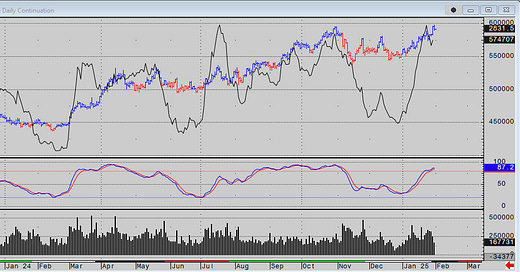“Move fast and break things.” Facebook motto, 2014
Upon his inauguration on March 4, 1933, FDR immediately embarked on an intense legislative agenda aimed at desperately needed economic recovery and reform. This period, from March 4 to June 16, 1933, was marked by a series of significant legislative actions and executive orders. The term "First Hundred Days" was coined by journalist and historian Arthur Krock, who wrote an article for The New York Times on June 11, 1933, titled "Whence the Hundred Days?" In my opinion, contemporary historians of Trump’s second presidency might arguably ask, “Whence the ten days?”
Whether history looks kindly on Trump’s onslaught in these early days of 2025, only time will tell. However, history will note his stunning level of preparation, transparency, and determination to provide relief and reform to a nation that voted for radical change. However, this blitz of change not caused by a stock crash and a depression. Trump and his populist zeitgeist are the direct result of a rising stock market and the unsustainable debt that fueled it, in my opinion. History does not require a stock crash to precede radical political change. In fact, the opposite is often the case although a crash is ultimately unavoidable.
One of FDR’s first acts was the Emergency Banking Act, which helped stabilize the banking system. I think that is quite similar to Trump’s immediate action closing the U.S. borders to stabilize social chaos. The New Deal put people back to work. Trump’s primary goal is exactly the same: open the factories.
Reform was the order of the day in 1933, and it is the order of the day in 2025. Musk is cutting fat, tenderly at first, but the news wires are going to love covering it and the effect on inflation might become a D word liabilty. We need to lose two trillion in spending to get back to 2023. Bullish for bonds? 60/40 to 20/80… So says, Jeff Gundlach. You decide.
Will bitcoin be the same as FDR’s Executive Order 6102, prohibiting ownership of gold in the United States? If anyone doubts the money we rely on as a civilized nation is not on Trump’s agenda, they are not paying attention. I doubt if his “crypto crush” is puppy love, but he’s not there yet.
By 1935, FDR’s landslide victory had immense public support. However, many business leaders and politicians didn’t like him. The Supreme Court struck down several New Deal programs. There were active communist and socialist political parties and a pseudo-Nazi party called the German American Bund. Today, the two-party American political system has been shattered by a coalition of ex-Democrats, independents, and Republicans with a “Common Sense” motto first averred by Thomas Paine in 1776.
I am not so much comparing Donald Trump to FDR. I am seeing eerie similarities to the the 1930s and now. People were poor in the 1930s. Thrift was synonymous with survival. Every penny was scrupulously watched at every company, in every bank, government department, and every kitchen table. Thrift is definitely making a comeback in 2025.
Unfolding now in this weekend issue of “Market Vibes” is a look at the markets’ narratives and their technical condition in light of Trump’s first ten days.
Keep reading with a 7-day free trial
Subscribe to market vibes to keep reading this post and get 7 days of free access to the full post archives.




